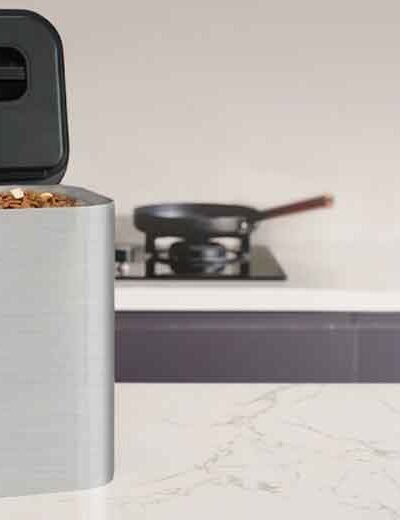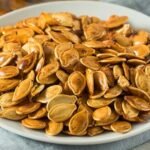 Every household faces the same challenge: how to store food effectively so that it stays fresh, safe, and nutritious. Whether it’s dry staples like rice and pasta or perishable items like fruits, vegetables, and dairy, improper storage can quickly lead to spoilage, waste, and even health risks. By adopting the right storage methods, you not only extend the shelf life of your groceries but also preserve their flavor and nutritional value. From pantry organization to refrigeration techniques, and even the use of vacuum storage containers, there are practical strategies that can make a big difference in everyday food management.
Every household faces the same challenge: how to store food effectively so that it stays fresh, safe, and nutritious. Whether it’s dry staples like rice and pasta or perishable items like fruits, vegetables, and dairy, improper storage can quickly lead to spoilage, waste, and even health risks. By adopting the right storage methods, you not only extend the shelf life of your groceries but also preserve their flavor and nutritional value. From pantry organization to refrigeration techniques, and even the use of vacuum storage containers, there are practical strategies that can make a big difference in everyday food management.
Understanding the Nature of Different Foods
The first step in effective food storage is recognizing that not all foods are created equal. Dry goods such as beans, grains, and flour require protection from moisture, insects, and light. Perishable foods, on the other hand, are highly sensitive to temperature and humidity changes. Fresh produce like leafy greens wilt quickly without proper airflow, while proteins such as meat and fish demand strict refrigeration to avoid bacterial growth.
Knowing the unique needs of each food group allows you to choose the most suitable storage solutions. For instance, while a bag of rice may do fine in a sealed jar in the pantry, freshly cut vegetables will last much longer when kept in a cool environment with controlled humidity.
The Role of Temperature in Food Preservation
Temperature control is one of the most critical elements in food storage. Dry foods thrive in cool, dark places with minimal fluctuation, ideally between 10°C and 21°C. Storing them in areas prone to heat or direct sunlight accelerates deterioration and can even cause oils in items like nuts or seeds to turn rancid.
For perishable foods, refrigeration is essential. Keeping your refrigerator at or below 4°C helps slow down bacterial growth, while the freezer, set at -18°C or lower, ensures long-term preservation. However, freezing is not always the best solution, as certain foods, like lettuce or dairy-based sauces, can lose texture and quality when frozen.
Organizing Your Pantry for Dry Foods
A well-organized pantry not only makes it easier to find ingredients but also extends their shelf life. Airtight containers protect dry foods from moisture and pests, while clear labels help track expiration dates. Storing similar items together—such as grouping baking supplies, grains, and snacks—minimizes the risk of forgetting what you have and buying unnecessary duplicates.
One particularly effective method is rotating your stock. Place newer items behind older ones so you naturally consume food before it expires. This “first in, first out” approach is simple yet highly effective in reducing waste and maintaining freshness.
Refrigeration Best Practices for Perishables
Perishable foods require thoughtful organization in the refrigerator. Different sections are designed with specific temperature ranges in mind. For example, the crisper drawers are ideal for fruits and vegetables, with adjustable humidity settings that cater to their individual needs. Meat and fish are best kept in the coldest section, typically the bottom shelf, where temperature fluctuations are minimal.
Avoid overcrowding the refrigerator, as airflow is crucial for maintaining consistent cooling. Overstuffing can trap heat in certain areas, leading to uneven preservation and faster spoilage. Additionally, keeping strong-smelling items covered prevents odors from transferring to more delicate foods like dairy or baked goods.
The Benefits of Vacuum Storage Containers
For both dry and perishable foods, 真空 保存 容器 have emerged as a highly effective solution. By removing air, these containers slow down the oxidation process, which is a major cause of food spoilage. Dry goods like coffee, flour, and cereals retain their aroma and crispness longer, while perishable items such as cheese, cut vegetables, or even leftovers benefit from extended freshness.
Vacuum storage also minimizes the risk of freezer burn when used with frozen items. By creating an airtight seal, moisture loss is reduced, preserving both flavor and texture. For households aiming to cut down on waste and maximize grocery budgets, incorporating vacuum storage containers into daily food management routines can be a game-changer.
Common Mistakes to Avoid
Even with the best intentions, it’s easy to make mistakes in food storage. Leaving bread in the refrigerator, for instance, can cause it to dry out faster, while storing onions and potatoes together leads to quicker sprouting due to shared gases. Another common error is neglecting to check expiration dates on packaged goods—what looks fine at a glance may already be past its best-by period.
It’s also important not to rely solely on visual cues. Some foods, such as dairy or cooked leftovers, may harbor bacteria long before they show visible signs of spoilage. Following recommended storage durations and practicing regular checks can help avoid foodborne illness.
Balancing Convenience and Preservation
While maximizing freshness is essential, convenience plays an equally important role. Preparing meals becomes far less stressful when ingredients are properly stored and easy to access. Keeping pre-washed and pre-cut produce in the refrigerator encourages healthier eating, as snacks and ingredients are readily available. Similarly, storing dry staples in labeled containers saves time when cooking.
Vacuum storage containers can add a balance of both convenience and preservation. Since food lasts longer, you can prepare larger batches of meals or purchase in bulk without worrying about waste. This combination of efficiency and freshness makes meal planning more straightforward.
Creating a Sustainable Food Storage Routine
Adopting best practices for food storage is not only beneficial for your household but also for the environment. Reducing food waste directly contributes to lowering the demand on food production and distribution, which has a measurable impact on sustainability. A conscious approach to storage—through proper temperature management, vacuum storage, and mindful organization—means fewer groceries are discarded prematurely.
By treating food as a valuable resource and handling it with care, households can save money, enjoy higher-quality meals, and contribute positively to broader environmental goals.
Conclusion
From pantry shelves to the dinner table, the way you store food has a profound effect on its quality, safety, and longevity. Dry goods require protection from moisture and light, while perishables demand strict temperature control and proper airflow. Techniques like stock rotation and careful organization ensure efficiency, while tools such as vacuum storage containers enhance both preservation and convenience.
By embracing these best practices, you not only reduce waste and save money but also elevate the quality of your meals. Food that is properly stored doesn’t just last longer—it also tastes better, nourishes more effectively, and supports a healthier lifestyle.





Leave a Reply